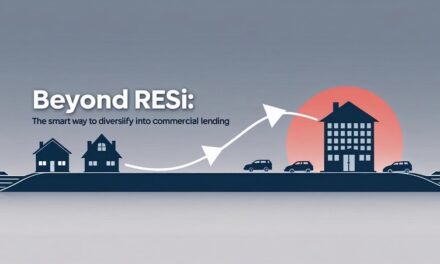Too Busy to Read? We’ve Got You.
Get this blog post’s insights delivered in a quick audio format — all in under 10 minutes.
This audio version covers: The 4-Hour Approval Imperative: Optimizing Broker Submission Quality to Master Turnaround Time and Client Satisfaction
The 4-Hour Approval Imperative: Optimizing Broker Submission Quality to Master Turnaround Time and Client Satisfaction
Loan turnaround time is a foundational element of customer service and directly correlates with client satisfaction and the likelihood of repeat business. While some competitive lenders advertise extremely rapid approval targets—such as Macquarie aiming for four hours for fully completed applications—historical reports suggest that customer satisfaction with speed has lagged in the broker channel (53%) compared to the proprietary bank channel (61%).
This satisfaction gap indicates that the principal bottleneck is often not the lender’s processing capacity but the variable quality and completeness of broker-lodged applications. If a 4-hour approval is possible for a clean file, the imperative for the broker is to ensure submissions consistently meet “fast track” criteria and bypass manual queueing. This requires leveraging digital tools for pre-submission error checking, such as those integrated into platforms like NextGen, which streamline the origination and assessment process.
Strategic brokers treat lender turnaround capacity as a fluctuating variable, just as important as the interest rate. Time sensitivity, especially concerning settlement deadlines, frequently trumps minor rate differences for clients. By utilizing real-time data sources (often provided by aggregators), brokers can strategically place loans with the lenders currently demonstrating the fastest service levels, prioritizing a fast, certain unconditional approval over a marginally cheaper, but highly uncertain, one.
Article Navigation
- The Turnaround Time Crisis: Data, Diagnosis, and the Cost of Uncertainty
- Strategic Time Triage: Leveraging Data for Tactical Lender Placement
- The Compliance Imperative: Aligning BID with Submission Perfection
- The Digital Imperative: Achieving ‘Zero-Touch’ Submission Perfection
- The ‘Clean File’ Framework: Policy and Process Mastery for Unconditional Certainty
- Optimising Broker-Lender Partnerships for Speed and Certainty
I. The Turnaround Time Crisis: Data, Diagnosis, and the Cost of Uncertainty
The Broker Channel Satisfaction Gap
For the Australian mortgage broker channel, loan turnaround time (TAT) represents a critical operational metric that directly influences client loyalty and market competitiveness. While brokers continue to be highly trusted, particularly for complex financial arrangements and personalised support [1], current data reveals a significant vulnerability: the speed of service.
Historical reports highlight a foundational challenge to the broker value proposition: customer satisfaction with the speed of approval processes lags in the broker channel (53% satisfied) compared to the proprietary bank channel (61% satisfied). This eight-point satisfaction gap signals a fundamental disconnect between the broker’s promise of comprehensive market access and the client’s experience of the ultimate process speed.
This disparity creates a tangible competitive risk. As economic conditions shift and digital disruption accelerates, broker loyalty has shown signs of softening, particularly among younger or first-time borrowers who are increasingly drawn to online banking channels due to their simplicity and perceived speed.[1] If the brokered transaction is slower or less certain than a direct proprietary bank submission, the core value proposition of choice and expertise is effectively eroded in the eyes of the digital-first consumer. Addressing this TAT gap is therefore not merely an issue of customer service, but a strategic imperative to secure future market share.
The Bifurcated Assessment Reality: Fast-Track vs. Manual Queueing
The analysis of lender performance reveals an operational reality: lenders run a fundamentally bifurcated assessment process. Leading lenders openly advertise extremely rapid approval targets—Macquarie, for instance, aims for four hours for fully completed applications.[2, 3, 4] Similarly, several major banks advertise conditional or unconditional targets of one business day or less.[2, 3] This capacity demonstrates that rapid approval is technologically feasible.
However, the reported average turnaround times present a stark contrast, revealing the penalty for failing the fast-track criteria. Major institutions frequently report average TATs ranging from four to seven business days (e.g., CBA 4–7 days, NAB 7 days).[2, 3] This massive variance between the ‘best case’ (4 hours) and the ‘average case’ (7 days) confirms the existence of a rigorous, automated triage system. Applications that are imperfect, lack key information, or fail automated credit policy validation are immediately shunted to the slow, manual queue, resulting in a three-to-six-day processing penalty. The primary input into this backlog is often variable quality submissions from the high-volume broker channel.
The Economic and Reputational Cost of Delay
In Australia’s dynamic housing market, time sensitivity frequently trumps minor rate differences for clients, especially when facing critical settlement deadlines.[5] When buyer competition intensifies and property prices strengthen, the cost of delay can include forfeiting a deposit, losing a highly sought-after property, or incurring substantial settlement extension fees. These financial and emotional costs often vastly outweigh any marginal savings achieved by selecting a slightly cheaper, yet slower, lender.
Strategic brokers must therefore reprice their service value proposition, shifting their focus from being a ‘lowest rate finder’ to acting as a ‘guarantor of settlement certainty and speed.’ The ability to consistently place a loan with the lender currently demonstrating the fastest, most certain path to unconditional approval becomes the paramount measure of success. The broker is no longer optimizing for a fractional interest rate difference, but for the mitigation of timeline risk for the client.
The Core Diagnosis: Broker Submission Quality as the Principal Bottleneck
The principal bottleneck responsible for the TAT satisfaction gap is explicitly identified as the variable quality and completeness of broker-lodged applications, rather than inherent lender processing capacity. This finding is consistently reinforced by lender Business Development Managers (BDMs), who cite missing or outdated documentation and non-adherence to the lender’s specific submission checklists as the most common reasons for application rework.[6]
Every minute an assessor or BDM spends chasing a missing payslip, clarifying a deposit source, or manually reviewing a partially completed application is a delay absorbed by the client. The widespread failure to ensure submissions consistently meet “fast track” criteria forces the file into manual queues, thus creating the systemic delay that damages the channel’s reputation. The imperative for the broker is clear: process mastery is the only pathway to achieving advertised target approval times.
II. Strategic Time Triage: Leveraging Data for Tactical Lender Placement
Treating Turnaround Time as a Fluctuating Variable
Expert brokers must view lender turnaround time capacity not as a fixed product feature, but as a dynamic, fluctuating variable that changes daily or weekly based on external market volume, internal resource allocation, or system updates. Relying on static, historical averages is an outdated methodology. To achieve optimal client outcomes, brokers must leverage real-time data sources—typically provided directly by aggregators or lender portals—to identify which lenders are currently demonstrating superior service levels.[6, 7] This strategic approach to lender placement, based on dynamic TAT triage, ensures the submission is directed towards the path of least resistance and maximum speed.
Essential Tiered Lender Approval Benchmarks
Understanding the tiered benchmarks of lender performance is crucial for managing client expectations and strategically placing a loan. The data below illustrates the inherent risk profile associated with submission quality: a perfect, clean file is rewarded with the fast-track time; any deviation subjects the application to the lengthy average processing time.
Table 1: Tiered Lender Approval Benchmarks (Fast-Track vs. Average)
| Lender Tier | Lender Examples | Fast-Track Unconditional Target | Reported Average TAT | Fast-Track Condition for Brokers |
|---|---|---|---|---|
| Digital/Non-Bank Leader | Macquarie, Tic:Toc, Nano | 4 Hours to <1 Business Day | 1-2 Business Days | Full digital integration, all documents supplied, specific system compatibility. [2, 4] |
| Major Bank (Tier 1 – Best Case) | NAB, Westpac, CBA, ANZ | 1 Business Day or less (Conditional) | 4-7 Business Days | Clean file, standard scenario, specific LVR/LTI rules. [2, 3] |
| Regional/Smaller ADI | BOQ, AMP | 2-3 Business Days | Varies Widely (Policy Dependent) | Direct BDM channel access, adherence to bespoke checklists. [2, 3] |
The Triage Decision Matrix: Certainty Over Cost
The core decision in time triage involves prioritizing speed and certainty over a marginally better interest rate. When a client faces a tight settlement deadline or is competing for a desirable property, the imperative is to secure an unconditional approval quickly. In this context, selecting a lender with a reliable one- to two-business-day average TAT should strategically outweigh chasing a minor rate saving (e.g., 5 to 10 basis points) at an institution currently struggling with a five- to seven-day average backlog.
Actionable Insight: Timeline Risk Management
The professional broker’s role includes actively managing timeline risk. Choosing a slow lender for minimal financial gain exposes the client to unnecessary settlement uncertainty and potential financial detriment. This strategic placement, based on real-time data and a full understanding of the client’s timeline pressures, is a demonstrable application of higher-quality credit assistance.
III. The Compliance Imperative: Aligning BID with Submission Perfection
The Best Interests Duty (BID) and the Expectation of Promptness
The pursuit of submission perfection is not merely an efficiency measure; it is fundamentally aligned with the broker’s regulatory and professional obligations. The Mortgage & Finance Association of Australia (MFAA) Code of Practice mandates that members must “act promptly and properly in relation to the management of finance applications”.[8] Furthermore, the Australian Securities and Investments Commission (ASIC) Regulatory Guide (RG 273) confirms that the Best Interests Duty (BID) is intended to lead to a “higher quality of credit assistance”.[9]
A submission prepared so meticulously that it qualifies for automated fast-track assessment—such as a four-hour approval—is the clearest functional demonstration of high-quality credit assistance. Conversely, submitting a partially completed or error-prone file merely to ‘reserve a spot’ in the queue, knowing it will likely result in rework and multi-day delays, risks compromising the required standard of prompt and proper action, effectively prioritizing the broker’s workflow over the client’s urgent need for certainty and speed.
Beyond Documentation: The Requirement for Verifiable Data Integrity
The effectiveness of the BID regime, which came into effect in 2021, relies heavily on improved processes for gathering and documenting information about a customer’s individual circumstances and objectives.[10] For an application to successfully pass automated policy checks and achieve fast-track status, the underlying data integrity must be beyond reproach. This means verifying income, existing liabilities, and expenses with complete accuracy.[11]
Incomplete or inaccurate data gathering inevitably leads to assessor queries and rework, stalling the application. When a broker ensures a submission is clean and accurate, they are not only accelerating the file but also demonstrating that they have taken the necessary reasonable steps to confirm data reliability, which is a key component of responsible lending obligations under the National Consumer Credit Protection Act 2009 (NCCP Act). The clean file acts as a protective shield, proving the diligence required by regulation.
Deconstructing the Rework Loop: Common Pitfalls
BDMs across the industry confirm that the vast majority of delays arise from easily avoidable errors. The most common reasons for a file being kicked out of the fast track and requiring manual intervention include key documents being missing, outdated, or difficult to read.[6] Examples include payslips older than the required 60 days, financial statements that are not current, or failure to use the lender’s specific, most recent document checklist.[6]
A more subtle, yet significant, issue is the policy lag. Lenders are constantly updating criteria regarding LVR caps, income calculation methodologies, or treatment of complex liabilities. A manual checklist based on old knowledge can quickly become obsolete. Submitting an application without integrating a check against the lender’s live policy data means the file risks failure during automated policy validation, ensuring it is relegated to the slow, manual assessment team for interpretation and potential decline.[12] Submission mastery requires dynamic, rather than static, policy checking.
IV. The Digital Imperative: Achieving ‘Zero-Touch’ Submission Perfection
Mastering ApplyOnline and NextGen: Beyond Data Entry
The gap between a four-hour approval and a seven-day wait is closed primarily through the rigorous use of digital validation technology. Platforms such as NextGen/ApplyOnline are explicitly designed to “reduce time to yes with built-in validation tools and automated lender credit policy checks”.[13]
Brokers must fundamentally shift their perspective from viewing these systems merely as data entry mechanisms to seeing them as essential, proactive quality control gates. The integrated tools perform automated credit policy checks, ensuring the application aligns with the lender’s Automated Decisioning Engine (ADE) before it even enters the queue. Submitting a file without leveraging the full suite of smart automation is equivalent to relying on manual interpretation of policy, which guarantees inevitable exceptions, manual queueing, and rework. Full adoption of these integrated digital features is the only reliable way to consistently hit the sub-24-hour fast-track benchmark.
The Broker’s Digital Pre-Submission Validation Checklist
Achieving submission perfection requires integrating specific digital steps into the workflow to proactively intercept the errors that typically lead to BDM rework requests.
Table 2: The Broker’s Digital Pre-Submission Validation Checklist
| Validation Stage | Key Digital Tool/Feature | Purpose (Error Mitigation) | Source Reference |
|---|---|---|---|
| Client Identity | NextGenID/Facial Biometrics | Precise identity verification using official Australian documents; eliminates delays in manual ID checks. | [13] |
| Serviceability & Policy | Integrated Calculator/Automated Policy Check | Pre-qualifies application confidently against up-to-date lending criteria and policy tools. | [13] |
| Document Quality & Currency | Aggregator/Lender Checklists (Live Feed) | Ensures no key documents are missing, expired (e.g., payslips), or incorrectly scanned. | [6] |
| Data Integrity | Integrated Open Banking/Digital Verification | Streamlines and automates document and signature collection, reducing manual fraud risk and rework. | [13] |
| Scenario Alignment | Automated Status Update/Comparison Tool | Confirms no material changes since initial pre-approval that would void the fast-track criteria (e.g., new debts). | [14] |
The Future of Zero-Touch Submissions: Leveraging APIs
The shift towards zero-touch submissions is accelerating through enhanced digital efficiency tools, including integrated open banking and automated ID and signature collection.[13] This trend significantly minimises reliance on manual, unsecured, or non-compliant document formats like scanned PDFs. Manually handled documents are a chronic source of error and verification delay.
Brokers who proactively adopt integrated digital verification workflows are positioning their businesses to handle higher volumes with reduced administrative and compliance risk. They ensure that their client experience is frictionless, speedy, and predictable, thus future-proofing their business against competition from digitally native lenders and closing the perceived satisfaction gap with proprietary channels.
V. The ‘Clean File’ Framework: Policy and Process Mastery for Unconditional Certainty
The clean file framework is the final internal quality control gate, designed to ensure every component required for unconditional approval is satisfied upon first submission, thereby guaranteeing eligibility for the lender’s fastest assessment pathway.
The 12-Point Unconditional Approval Submission Checklist
This checklist operationalizes the concept of submission perfection, transforming anecdotal best practices into a hard process standard essential for fast-track eligibility.
Table 3: The 12-Point Unconditional Approval Submission Checklist (Clean File Framework)
| Category | Checklist Item | Rationale for Immediate Approval | Compliance Link |
|---|---|---|---|
| Client Input | Complete Fact Find/SOA (Signed) | Confirms objectives and financial situation align, satisfying NCCP/BID documentation requirements. | Proper Action [8] |
| Documentation | Current and Valid Income Proof (Payslips/Tax Returns) | Ensures serviceability assessment is based on accurate, verifiable data required for fast-track automated assessment. | Responsible Lending |
| Documentation | Clear/Current Liabilities Statement | Critical for serviceability model; prevents delays caused by undeclared debts. | Data Integrity |
| Property Risk | Valuation Instructed and Received (If Required/Possible) | Addresses key risk mitigation prior to assessor review, preventing “pending valuation” holdups. | Certainty Management |
| Policy Match | Lender Policy Exclusions Cleared | Confirmation that the scenario specifically meets fast-track criteria (e.g., LVR threshold). | Policy Compliance [12] |
| Application Form | All Fields Complete & Signed (Digital Signatures Preferred) | Eliminates administrative rework and manual data reconciliation. | Efficiency [6] |
| Funds/Equity | Verified Evidence of Funds to Complete/Deposit | Essential for LVR calculation and financial position verification. | Data Integrity |
| Insurance | Evidence of required insurance (if applicable, e.g., building insurance) | Often a pre-settlement requirement that, if submitted early, aids smooth unconditional processing. | Process Management |
| Source of Deposit | Clear documentation for source of deposit (e.g., gifted funds, savings history). | Satisfies Anti-Money Laundering/Fraud requirements upfront. | Risk Mitigation |
| Disclosure | Commission Disclosure Document Signed | Mandatory ASIC requirement confirmed upfront. | BID/Transparency |
| Verification | ID (NextGenID) Verification Complete | Eliminates manual ID check bottlenecks. | Efficiency [13] |
| System Check | Internal ‘Four-Eyes’ Review Complete | Secondary check for completeness and policy adherence before submission. | Quality Control |
Structuring Complex Applications for Fast Track
For applications involving self-employed borrowers, complex investment structures, or scenarios deviating slightly from standard criteria, the definition of a “clean file” is elevated. These files require comprehensive, accurately dated, and correctly cross-referenced supporting documents, such as full financial statements and tax assessments.
Proactive Mitigation for Complex Scenarios
Crucially, complex submissions must include a concise, professional cover letter that proactively addresses any potential policy grey areas or perceived risks. By providing pre-emptive mitigants and simplifying the scenario for the assessor, the broker reduces the chances of the file being halted for clarification. Lender BDMs often stress the importance of education and clear communication around credit policy [12]; this cover letter serves as the broker’s policy summary, dramatically simplifying the assessor’s job and accelerating the manual review process.
Internal Quality Control: Implementing a ‘Four-Eyes’ Review System
A significant number of submission errors occur simply because a busy broker rushes the final lodgement phase. This single moment of administrative haste can cost the client and the broker several days of delay and subsequent rework.
Implementing a mandated internal quality control step—a “Four-Eyes” review—is a highly effective risk mitigation strategy. Before hitting ‘submit,’ a second party, such as a processor or administrative staff member, should verify the application against the 12-Point Checklist and confirm adherence to the current lender TAT and policy criteria. This small investment in internal process integrity prevents catastrophic rework costs, reduces compliance risk, and protects the broker’s reputation as a reliable and efficient service provider.
VI. Optimising Broker-Lender Partnerships for Speed and Certainty
Strategic BDM Engagement: When and How to Leverage Support
A strong working relationship between a broker and a Business Development Manager (BDM) is a cornerstone of success.[12] However, BDMs are finite resources best utilised for complex policy interpretation, scenario unpacking, and education regarding lender requirements.[12] They should not be used as an adjunct for basic loan status updates or for chasing routine documentation errors.
Earning Priority Access
Brokers who consistently submit clean files build a high degree of trust and earn an implicit priority relationship. When a genuinely complex file requires manual intervention or advocacy, the BDM is far more likely to invest their time supporting the broker who does not habitually waste their resources on avoidable administrative errors. Earning this priority through operational excellence is key to accessing timely support when it is most critically needed.
Maximising Lender Portals and Aggregator Tools
Lender portals and aggregator software are essential resources that brokers often fail to fully utilise.[6] These platforms contain up-to-the-minute data critical for strategic submission: real-time loan tracking, current policy documents, updated checklists, and most importantly, current turnaround times.[6]
By mastering these self-service tools, brokers reduce reliance on BDMs for simple queries, freeing up the BDMs to handle genuine complex policy inquiries that require expertise. Brokers are encouraged to invest time in fully understanding the resources available on their lender and aggregator platforms, as this knowledge directly translates into processing efficiency and competitive advantage.[6]
Conclusion and Broker Call-to-Action
The disparity in client satisfaction regarding turnaround times between the broker channel and the proprietary channel is directly attributable to operational inefficiency within the submission phase. The crisis is manageable because the bottleneck—variable submission quality—is entirely within the broker’s control. The difference between a four-hour approval and a seven-day wait is determined by the broker’s commitment to submitting a perfectly clean, digitally verified application that seamlessly enters the lender’s automated decisioning pathway.
By strategically adopting real-time TAT data for lender triage and implementing rigorous digital pre-vetting tools, brokers can close the satisfaction gap and reposition themselves as providers of superior, high-certainty credit assistance. This commitment to process mastery is not just about speed; it reinforces the broker’s legal and professional duty to act promptly and properly [8], converting the Best Interests Duty into a badge of honour based on tangible results.[10]
The primary takeaway is that brokers must shift their operational focus from merely finding the best rate to guaranteeing the best *process*. The time saved through submission perfection translates directly into elevated client satisfaction, increased referral rates, and greater compliance assurance.
Call-to-Action for Australian Mortgage Brokers: Implement the Digital Pre-Submission Validation Checklist and the 12-Point Clean File Framework across all new submissions this week. Audit your last ten completed files against these standards to identify specific points of failure. Use this data to immediately refine internal processes and elevate your team’s focus from document gathering to process guarantee.
Visit The Broker Times for More InsightsThe Broker Times remains committed to providing timely, practical, and insightful content to help brokers navigate these critical industry shifts.






